Chameleons, crocodiles, snakes: reptiles are truly fascinating animals.
There are over 10,000 discovered reptile species. Many of them existed during the dinosaur ages, millions of years ago - in fact, dinosaurs were reptiles themselves. To celebrate our exotic friends, here are five interesting reptile species you may have never seen or heard of.
Gharial
Most of us know what a crocodile looks like, but the Gharial is a little different. Its unusual long narrow snout and rarity make it different to other crocodiles. The International Union for Conservation of Nature (IUCN) lists Gharials as critically endangered, with their numbers declining by up to 98% since the mid-1900s. The IUCN estimate there to be only 300-900 adult Gharials remaining in small areas of India and Nepal.
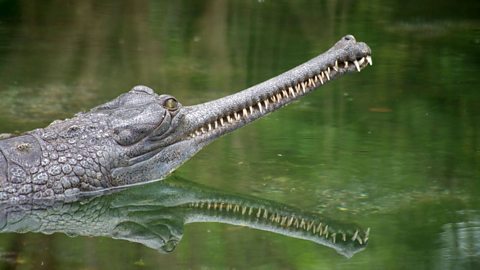
Their snouts are the perfect tool for catching fish. They are highly sensitive and can detect vibrations in the water. By whipping their head from side to side, they hone in on fish and grab them in their jaws, which are lined with more than a hundred teeth.
Like most crocs, Gharials enjoy basking in the Sun to warm up or rest in the shade or water to cool down. They can reach up to 4.5 m (15 ft) and weigh up to 900 kg (2000 lbs).
Blind snake
You may think the blind snake is an earthworm from your back garden, but you'd be mistaken. There are more than 300 sub-species of these worm-like snakes in the world.
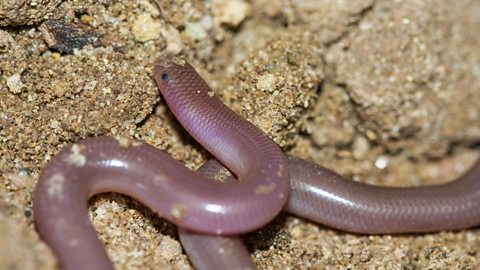
You may have guessed already but blind snakes are, well… blind. They do have eyes which reduce in size over the course of the development of the foetus, but they just can’t see out of them. Instead they rely heavily on their sense of smell to get around. With a blunt head and smooth, shiny scales, they spend most of their lives underground burrowing through the Earth to get around. They grow to a maximum length of 40cm long and mainly feed on the eggs and larvae of both termites and ants.
Thorny devil
Also known as the ‘thorny dragon’, the thorny devil is a lizard that kind of looks like something from a scary sci-fi film with a wicked name to match. In reality, they are slow-moving ant-eaters reaching only 20cm in length.
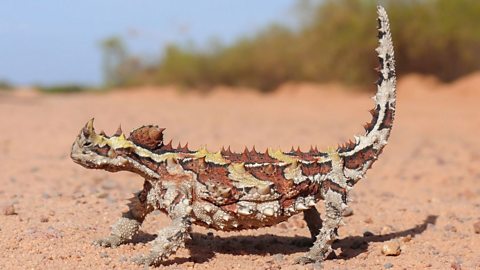
The thorny devil lives in dry areas of Australia and has a nifty trick for consuming water to survive. It places itself under shrubs covered in dew so droplets of water fall on it. Like a gutter on a house, the water runs down small grooves in between the spikes on its skin. These grooves guide the water all the way down to its mouth, allowing it to suck water from all over its body.
The slow-moving lizard sits on ant trails to feed, picking off ants with its tongue as they walk by. This means they are often in the open and could be the perfect target for potential predators - but they do have a few defense mechanisms up their sleeve.
They walk with an unusual rocking motion that is thought to confuse birds of prey and their spikes make them difficult to eat. Thorny devils also have a ‘false head’ on their shoulders and can make themselves appear bigger when threatened.
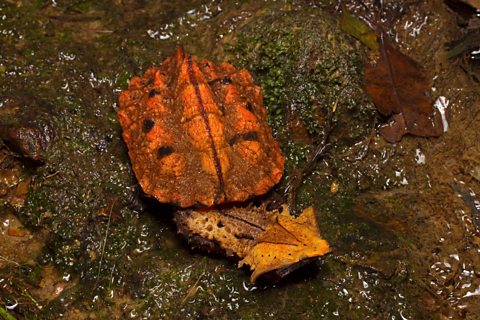
Mata mata turtle
Meet the turtle with the rocky shell and huge smile - this is the mata mata turtle. The mata mata turtle is native to the Amazon in northern South America, and spend its days at the bottom of soft, muddy, shallow bodies of water including streams, swamps and marshes. Despite being an aquatic species, they are not well adapted for swimming in open water.
These turtles weigh about the same as a 4-year-old child and have very poor eyesight, but they have other sensors to help them get around. Flaps extend from the side of their triangular shaped head, as well as their long neck. The flaps camouflage the turtle and can detect vibrations of nearby potential predators.
They largely remain motionless and use their camouflage in the muddy waters to suck up small fish. They seem pretty happy about it as well.

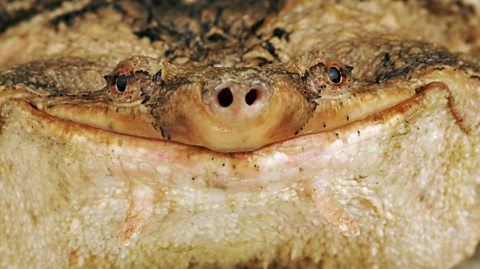
Panther chameleon
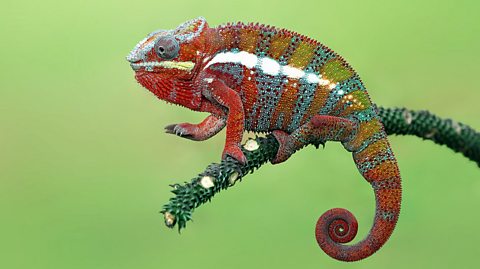
Keeping with the theme of camouflage, chameleons like the panther chameleon are known for their ability to change colour rapidly. The panther chameleon is one of three chameleon species, native to the African island of Madagascar. Its tail is like a fifth limb and it can use it to grasp onto trees.
Like most chameleon species, the panther chameleon is very difficult to spot - and there’s a good reason for it. Chameleons don’t have a dangerous bite, they can’t move quickly and their skin isn’t packed with poison, so staying hidden is their only tactic to evade predators.
Contrary to common belief, chameleons can’t transform their skin colour to match any background; however, they can make small colour adjustments to blend into their surroundings.
Chameleons have great eyesight and can move each of their eyes 180Àö independently without moving their head. This means they can use their long, sticky tongue to capture prey, all without moving.
If you didn’t think reptiles were ‘turtle-y’ amazing beforehand, then we sure hope you do now!
Six things you didn’t know about rabbits
We have some facts that you might not know about our hopping friends.

An odour can be one of the the finest mood boosters around

Who invented the emoticon and did it exist before computers?
